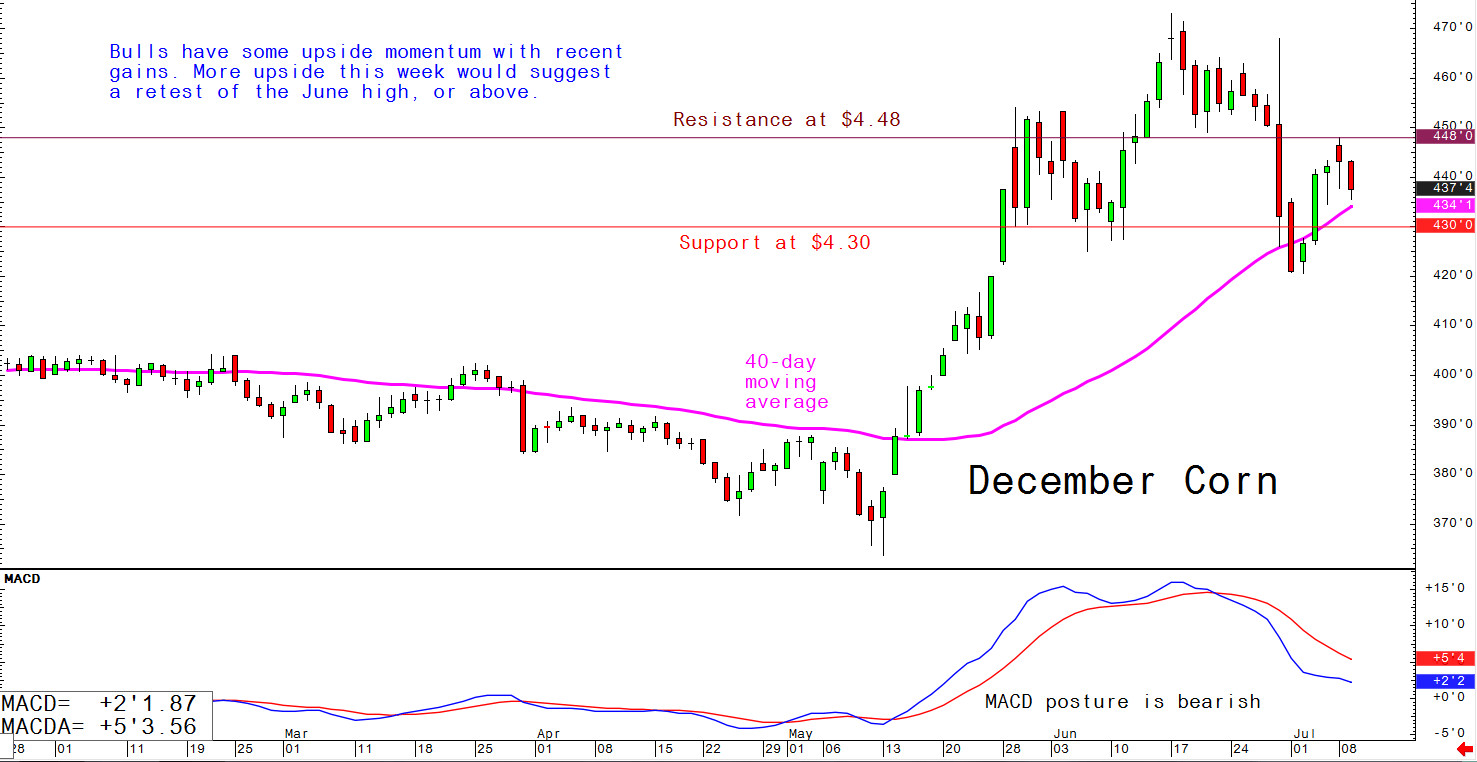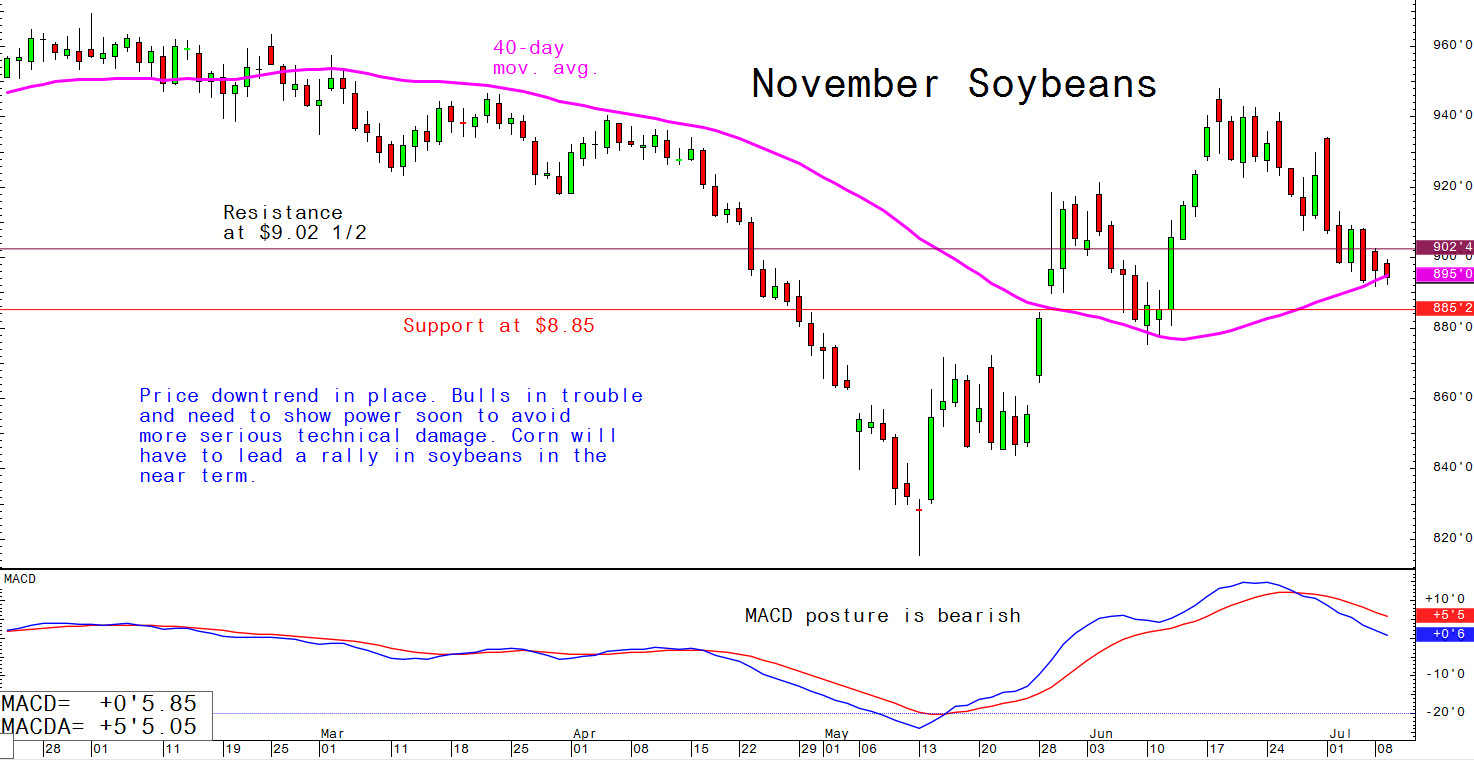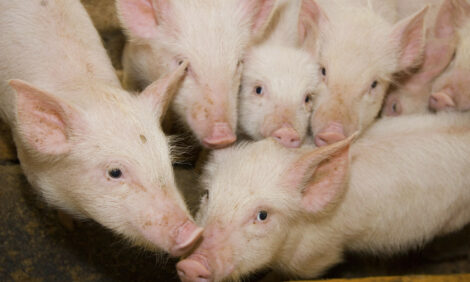



Daily US grain report: markets get no traction from weekly USDA crop reports
US grain futures prices were solidly lower in overnight trading. Corn was down around 6 to 8 cents, wheat off 6 to 7 cents and soybeans down around 4 to 5 cents.The weekly USDA crop progress reports released Monday afternoon showed the US corn condition rating rose a bit. Ninety-eight percent of the corn crop had emerged as of 7 July, whereas 100 percent of the crop is typically emerged at this point in the growing season. USDA reported only 8 percent of the corn crop was in the silking stage as of Sunday compared to 22 percent for the five-year average.
Recent drier and warmer weather pushed the corn crop rated "good" to "excellent" up 1 percent, to 57 percent, which was in line with market expectations but 18 percent behind last year's crop condition.

© Jim Wyckoff
USDA's soybean condition ratings dropped slightly versus trader expectations for some improvement. As of last Sunday, 96 percent of the US soybean crop had been planted - 3 percent behind the five-year average. Ninety percent of the crop was emerged as of 7 July, which compares to 98 percent for the five-year average.
Just 10 percent of the US soybean crop was blooming versus 32 percent for the five-year average and 44 percent seen last year at this time. USDA rated the amount of soybeans "good" to "excellent" at 53 percent; the market was expecting a 1 percent increase. The amount of the soybean crop rated "poor" to "very poor" was up 1 percent, to 12 percent.

© Jim Wyckoff
Warmer, drier weather over the past week helped the development of a late-planted US spring wheat crop, with 56 percent of the crop headed as of Sunday. That's still behind 73 percent headed for the five-year average. Spring wheat's condition rating by USDA saw 78 percent of the crop "good" to "excellent,"which is up 3 percent from last week.
Drier, warmer weather in the US Midwest the past week is deemed bearish for the grains markets. However, there are some weather forecasters calling for the building of a high-pressure ridge over the Midwest starting next week. That means higher temperatures and less rainfall. High-pressure ridges are also called "heat domes."
Grain traders are starting to focus on Thursday's monthly USDA supply and demand report, which is likely to move the markets, as USDA officials said they will factor into new-crop supplies the updated US corn and soybean acreage figures from the June report from the agency, as well as recent crop condition ratings.









